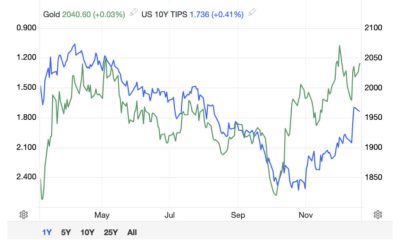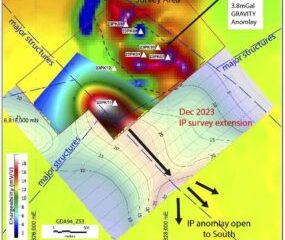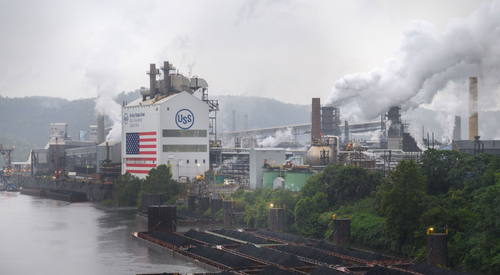Base Metals
You can’t build another Pilgangoora with a click of your fingers, and we could need 20 of them by 2040
As its Pilgangoora mine ramps up, Pilbara Minerals boss Dale Henderson says new entrants will find out how tough supplying … Read More
The post You can’t…

While many within the lithium industry insist supply is hard to bring online, demand metrics in the years to come require a fast response.
14 million electric vehicles will be sold this year according to the IEA, up 35% on 2022. BHP (ASX:BHP) claims there could be over 400 million on the world’s roads by 2030.
While BHP’s focus is (perhaps controversially) just copper and nickel, the reality is projections like those mean a massive increase in lithium demand from today.
In a new report on the outlook for the lithium market, corporate advisory firm RFC Ambrian says consensus demand forecasts for lithium sit at 2.92Mt of lithium carbonate equivalent, a CAGR of 19% and around four times the 720,000t registered in 2022.
Consensus analysis shows a deficit as large as 761,000t by then, setting a platform for the strong margins generated by hard rock lithium miners to continue.
However, RFC says the deficit could be much smaller, expecting supply to come online faster than many market observers anticipate.
“This is a large deficit relative to the market size and suggests that higher lithium prices will still be necessary to attract new supply or cause some demand destruction,” RFC says.
“Based on our own analysis of lithium supply … we also expect that the market will be in deficit in 2030, but that the deficit may not be as large as currently indicated by consensus because the pace of new supply is picking up.”
RFC, which sees a deficit of 129,000t by 2030, cautioned against analysts trying to forecast supply deficits in 2040 “because the projects that will fill this gap are unidentifiable, particularly because most of them are still only at an early stage of exploration”.
They see 1.594Mt LCE coming from current and prospective operations by 2025, rising to 2.792Mt in 2030. That is against a consensus average of 2.16Mt.
Not so fast
Pilbara Minerals (ASX:PLS) managing director Dale Henderson, whose Pilgangoora mine produced around 8% of the world’s lithium tonnes in 2022, said these theses that supply will outpace or keep up with demand are not new.
He is focused on the demand side of the equation for now, but warns it remains incredibly difficult to ramp up the way PLS has. By 2040, PLS thinks the market could require between 12 and 20 replicas of its Pilgangoora mine, the former including known potential supply.
“I think that thesis will continue to be to be talked about. Our observation is that the demand side of the equation looks really positive,” he told media.
“It’s more EV sales, it’s more mass energy storage using lithium. It appears to be going from strength to strength.
“As it relates to the supply side and this is the area we know better than most, it is incredibly difficult to bring new lithium supply online. That was our experience and what we’ve heard from the other major operators in the space, it was their experience too.
“So I think supply will be a struggle to bring to market and we think it’s likely demand will keep keep outpacing supply. We’ll all find out in the fullness of time, in the meantime, Pilbara will continue to we think enjoy strong returns, as we have done over the past 18 months.”
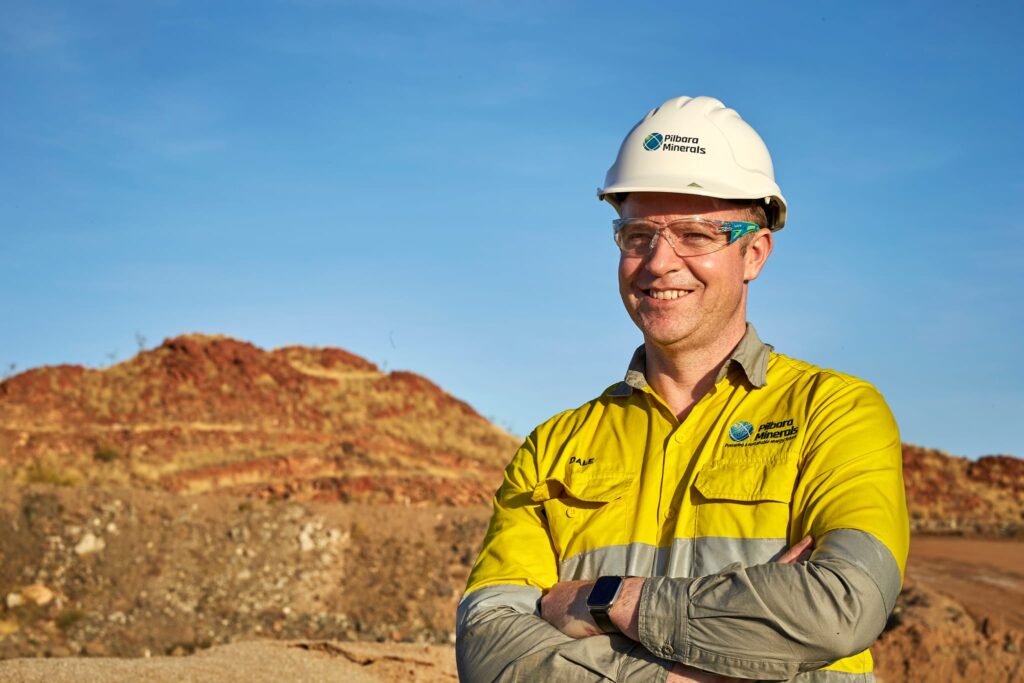
Latent potential
Pilbara stirred the loins of investment bankers and M & A reporters with the appointment recently of John Stanning, a former Macquarie banker, as its chief development officer.
He’s building a corporate development team, something which certainly points to its desire to look outside the business for growth.
With $3.3 billion in cash burning a hole in Henderson’s pocket, it has plenty of capacity as well.
But it was Albemarle, not Pilbara, that did the front running to take a cornerstone stake recently in Patriot Battery Minerals (ASX:PMT), the boom Canadian explorer chaired by old Pilbara boss Ken Brinsden.
On this week’s site visit the message was clear that Pilbara had plenty of growth options at its own Pilgangoora mine.
An expansion from a capacity of 580,000tpa to 680,000tpa is well under way with a $560m project to expand to 1Mtpa by replicating the circuits at its Pilgan processing plant has already been approved.
Tomra is on contract to deliver the largest installed lithium ore sorter in the world with a capacity of up to 5Mtpa (to be run initially at a 3.5Mtpa rate), something that should help further separate waste to improve recoveries — the bugbear of pretty much all lithium plants.
The P1000 project should be ramped up by the end of the September quarter of 2025, making Pilgangoora the second largest hard rock mine in the world behind Greenbushes.
On top of that 20,000m of drilling is planned in FY24, with recent drilling to be plugged into a resource and reserve update that should shed a light on Pilbara’s potential to extend its project life beyond the 25 years it has currently at a 1Mtpa runrate.
Amid it all, Henderson has a warning for new entrants hoping to follow the Pilbara blueprint, telling analysts, investors and media that being a developer is a “money furnace”.
He said Pilbara’s experience was it took 18 months and a boatload of cash to fix its operational performance and get lithium recoveries in its spodumene concentrate where they needed to be.
Henderson sees the potential for more consolidation in the sector, following on from deals like Livent and Allkem’s (ASX:AKE) proposed $16 billion marger, but thinks it’s too early to say whether the industry is headed in the direction of an iron ore, now dominated by a handful of major players.
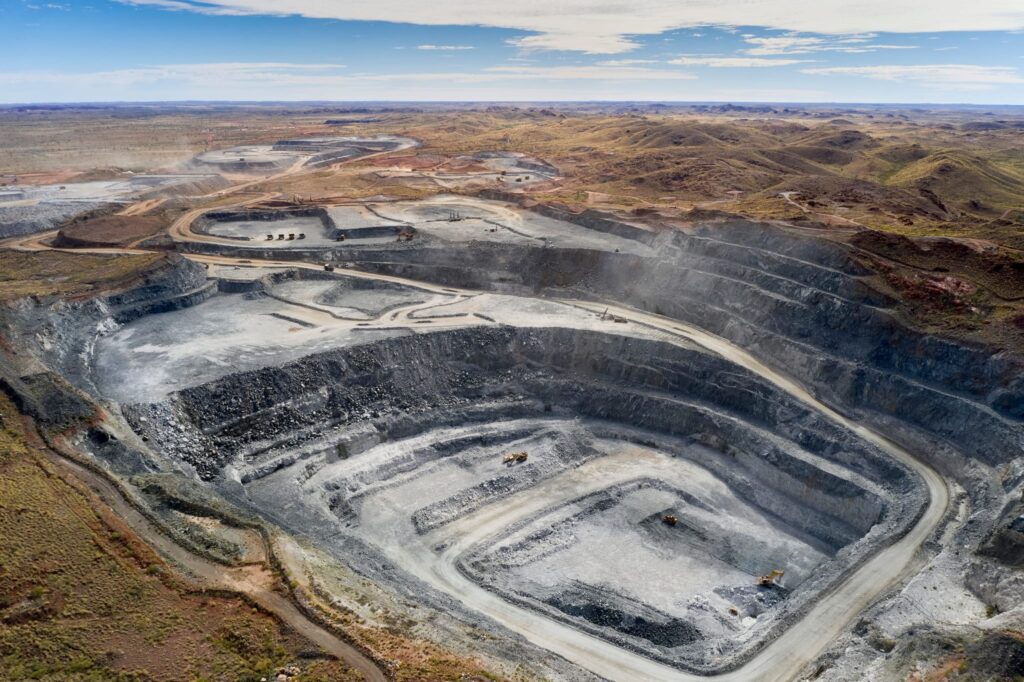
Battery hub
Henderson says Australia’s race is not yet run as a potential hub for value-added downstream lithium processing despite setbacks as it looks to break China’s virtual monopoly on lithium chemical production.
While Australia produces over half of the world’s lithium raw materials from WA’s network of massive spodumene mines, China controls the bulk of the world’s lithium hydroxide and carbonate processing plants.
That means it holds a critical position in the supply chain for electric vehicles, the key technology at the centre of the transition from fossil fuels to renewables.
Pilbara’s Pilgangoora mine on its own produced around 8% of the world’s lithium carbonate equivalent tonnes in 2022. A shortage of raw materials means the best margins are being enjoyed by companies at Pilbara’s end of the supply chain.
After hitting more than US$8000/t last year (upwards of eight times its cost base), spot prices have fallen to around US$3550/t.
Miners operating in Australia don’t know if that will be the case forever, with Federal and State governments keen to see value-adding onshore to provide thousands of jobs and billions to the local economy.
First movers have been beset by problems not apparent in the fast-moving Chinese refining industry. US giant Albemarle — 49% owner of the world-leading Greenbushes mine in the South West — has seen delays and cost blowouts at its Kemerton plant in WA.
The other Greenbushes owners Tianqi and IGO (ASX:IGO) said last week they produced just 174t of lithium hydroxide at the first train of their Kwinana plant in the June quarter. It is supposed to hit half of its 24,000tpa runrate by the end of the year, but that was announced all the way back in 2016.
But Henderson, who is looking to place 300,000t of spodumene each year into a downstream processing venture as part of a major expansion of the Pilgangoora mine, does not necessarily think Australia’s goose is cooked when it comes to downstream processing.
“I think the hydroxide developments which are underway are still early in their journey,” he said.
“And I think the other piece to comment on is the industry is early in its formation and what we’re observing is large scale development with respect to every aspect of this emerging industry.
“So the different supply chain solutions, different battery hubs have been talked about or flagged, different government support regimes, all of the above is underway and it’s been changing.
“So within all that it’s very difficult at this point in time to call out a particular approach as being good, bad or otherwise.”
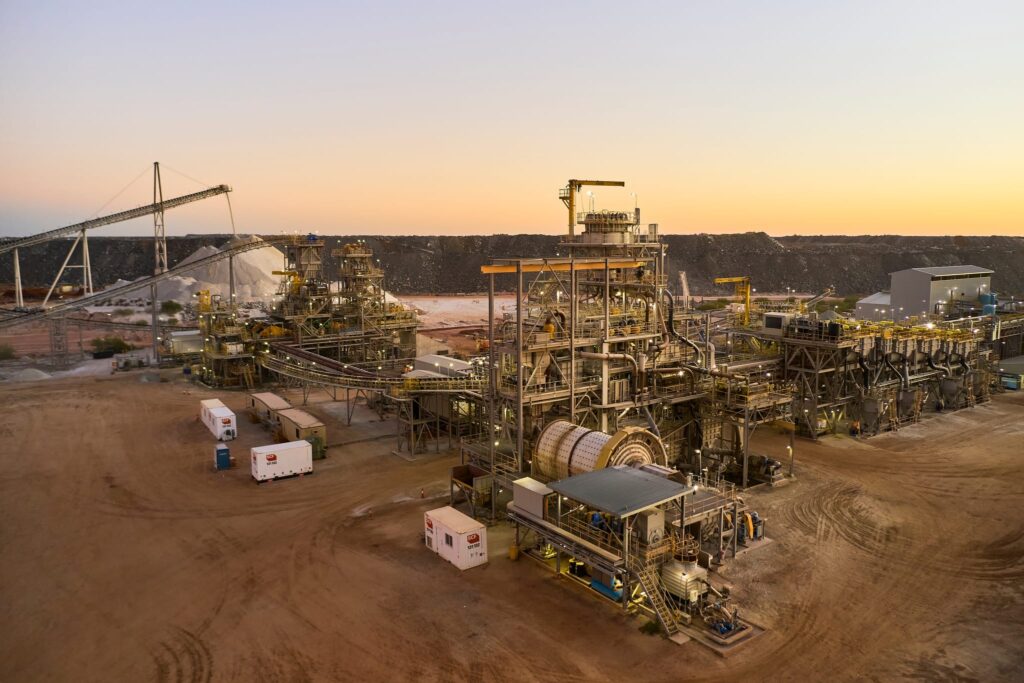
Open mind
Pilbara Minerals produced 620,100t of spodumene concentrate in FY23, up 64% year on year, and saw average realised prices lift 87% to US$4449/t.
It is unlikely to see such strong pricing this year as the industry evolves and margin pressure for converters in China keeps a lid on, still high, spodumene prices.
With that in mind and a fat wallet in its back pocket, PLS is looking into a number of ways to capture value as the industry evolves.
It is an 18% partner in customer POSCO’s Gwangyang plant, which will have an eventual hydroxide processing capacity of 43,000tpa. PLS has an option to take an extra 12% there, but can wait to see how it operates before exercising it.
A mid-stream demonstration plant costing $105 million ($20m from the Federal Government) will also see whether PLS can produce a lithium phosphate salt for sale to converters which will dramatically reduce the carbon intensity of the chemical production process, an important consideration for Western carmakers whose move into EVs is about reducing CO2 emissions.
Henderson would not be drawn on where PLS sees the larger refining facility, subject to its strategic partner process, being located.
“We’ve got a an open mind to do to either proposition, onshore or offshore. And the process we’ve launched is very much an outward reach to the broad market just to see what interest there is and to see what different constructs they would like to pursue,” he said.
“And we’re waiting to see what that looks like, but the idea of a midstream type solution has definitely been part of the discussions.
“I think some groups like the idea of a level an additional level of processing in Australia, and then shipping an intermediate product to a location elsewhere for the last sort of upgrade to hydroxide or other battery products.”
The post You can’t build another Pilgangoora with a click of your fingers, and we could need 20 of them by 2040 appeared first on Stockhead.

White House Prepares For “Serious Scrutiny” Of Nippon-US Steel Deal
White House Prepares For "Serious Scrutiny" Of Nippon-US Steel Deal
National Economic Adviser Lael Brainard published a statement Thursday…
How to Apply for FAFSA
Students and families will see a redesigned FAFSA this year. Here’s how to fill it out.
Dolly Varden consolidates Big Bulk copper-gold porphyry by acquiring southern-portion claims – Richard Mills
2023.12.22
Dolly Varden Silver’s (TSXV:DV, OTCQX:DOLLF) stock price shot up 16 cents for a gain of 20% Thursday, after announcing a consolidation of…







